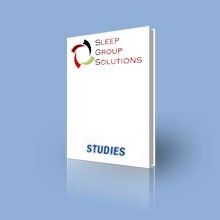
Acoustic Pharyngometry – A new method to facilitate oral appliance therapy
Abstract:
Background: There is lack of reliable and accurate methods to predict treatment out- comes of oral appliance (OA) treatment. Acoustic pharyngometry (AP) is a non-inva- sive technique to evaluate the volume and minimal cross-sectional area of the upper airway, which may prove useful to locate the optimal position of OAs.
Objective: This retrospective study aimed to evaluate the effect of applying AP to OA treatment of patients with obstructive sleep apnoea (OSA).
Methods: All patients (n = 244) treated with OAs following an AP protocol at two dental clinics between 2013 and 2018 were invited to participate. A total of 129 pa- tients accepted the invitation, and 120 patients (75 men, 45 women) were included in the analyses. Mean baseline age, BMI and apnoea hypopnea index (AHI) were 59.1 ± 0.9 years, 27.8 ± 0.4 and 21.9 ± 1.1, respectively. Mean follow-up time was 318 ± 24 days.
Results: AHI at follow-up was 6.4 ± 0.7, resulting in a treatment success rate of 86.7% (≥50% reduction of baseline AHI). The number of failures (<50% reduction of baseline AHI) did not differ significantly among patients with mild, moderate and severe OSA. 87.6% of the patients reported OA usage every night, and 95.5% reported > 5 hours usage per night, when worn.
Conclusion: The AP protocol applied seems to contribute to the excellent effect of OA treatment in this study. Further research on the application of AP in OA treat- ment is necessary in order to clarify its possible beneficial contribution to improving OA therapy.

